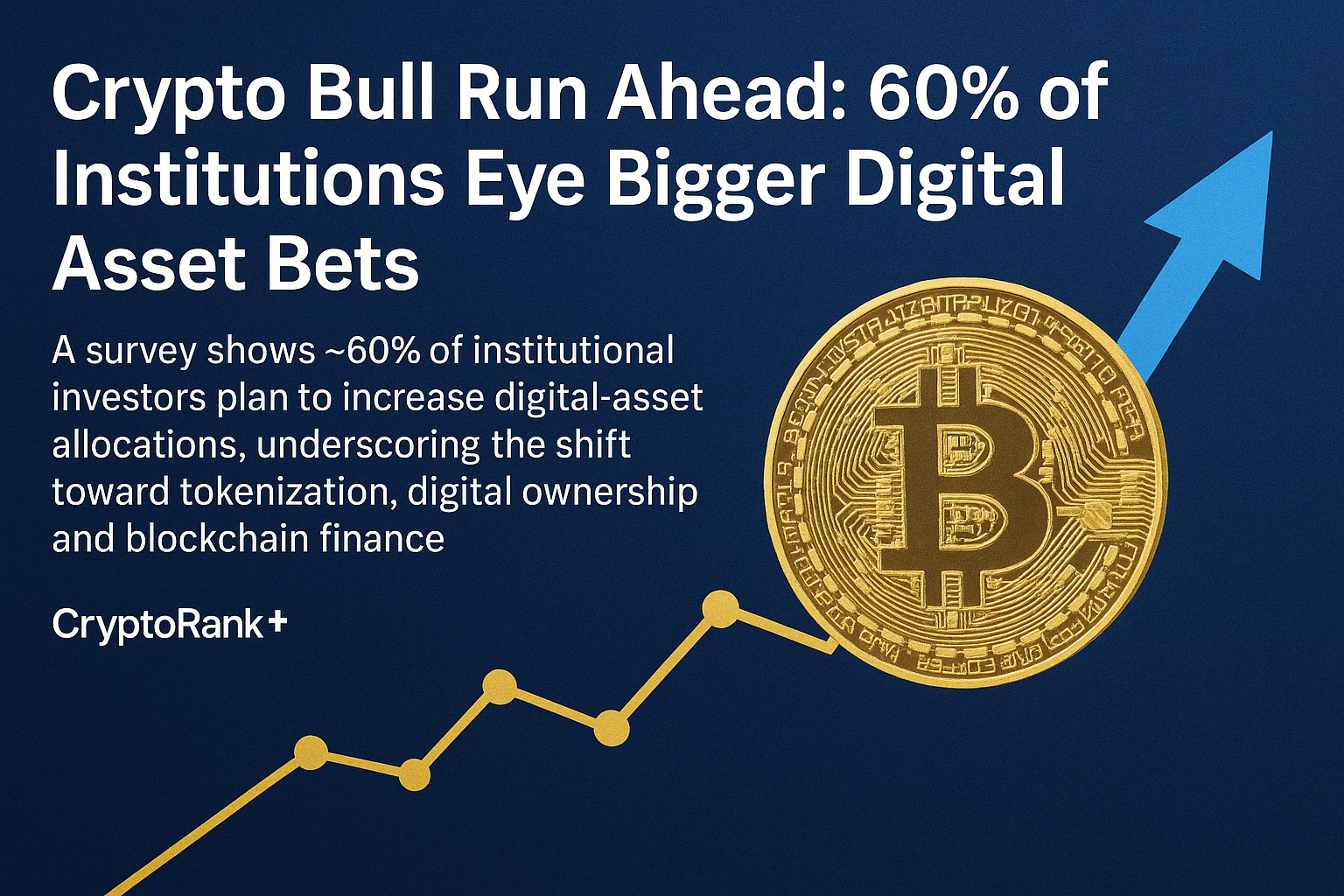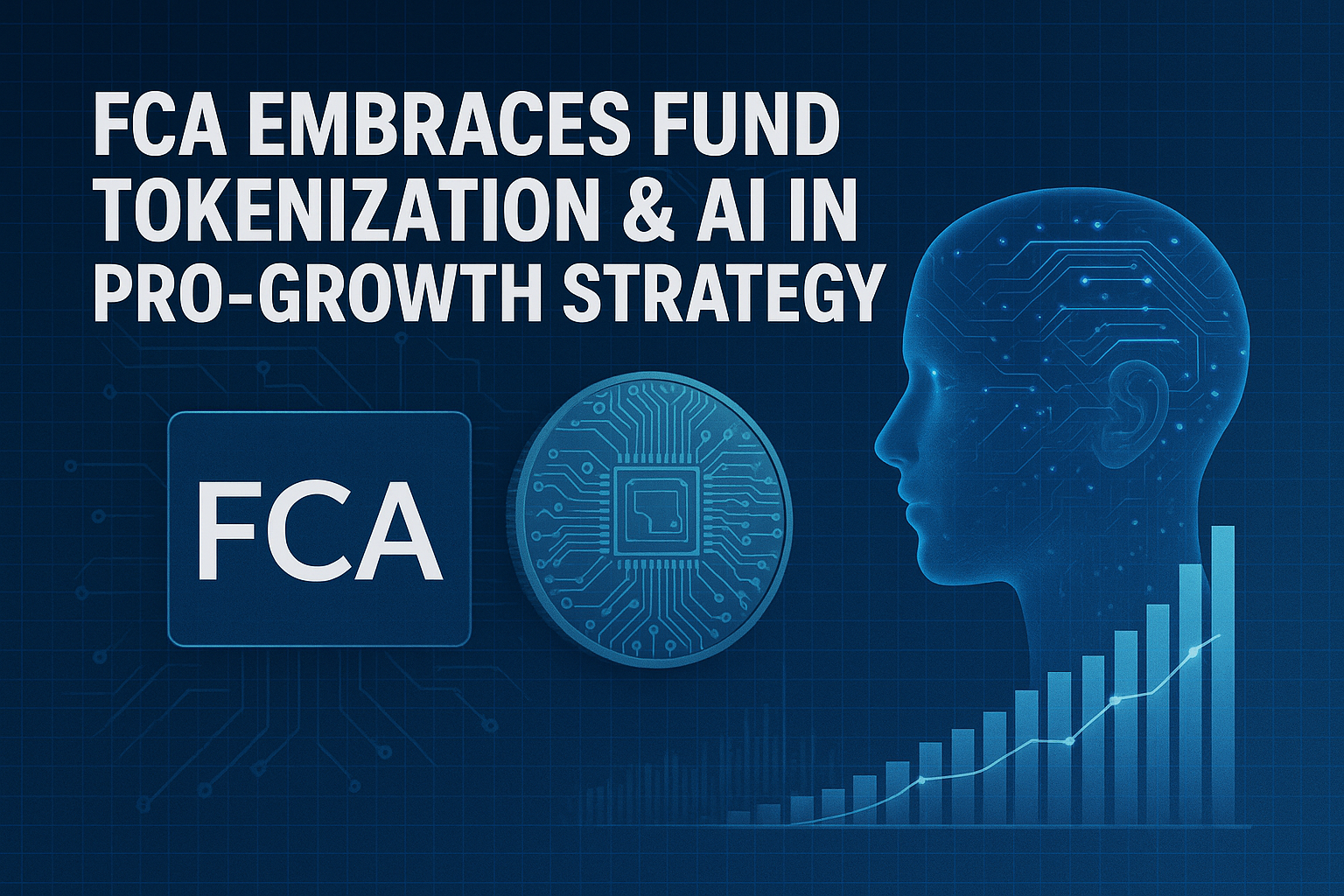The digital asset market is once again stirring with optimism — and this time, it’s not retail traders driving the momentum. A recent institutional survey reveals that nearly 60% of professional investors plan to increase their exposure to digital assets in the coming year. The findings mark a pivotal moment in the evolution of blockchain finance, signaling that tokenization, digital ownership, and decentralized infrastructure are no longer fringe experiments but core components of the modern financial ecosystem.
Institutional Confidence Rising
For much of the past decade, traditional financial institutions approached crypto with caution. Regulatory uncertainty, volatility, and the collapse of several exchanges had painted an image of a speculative Wild West. Yet, 2025 is shaping up to be different. Institutional sentiment has shifted dramatically — not just toward crypto as an asset class, but toward blockchain as a foundational technology for global finance.
This new wave of confidence is underpinned by maturing market infrastructure: regulated custodians, exchange‐traded products, on-chain settlement layers, and clear legal frameworks for tokenized assets. Firms ranging from asset managers to pension funds are quietly positioning themselves for what could become the next multi‐year bull cycle in digital assets.
Tokenization: The Bridge Between Traditional and Digital Finance
The concept of tokenization — converting real-world assets into digital tokens on a blockchain — is no longer theoretical. Major financial institutions have begun issuing tokenized bonds, equities, and real estate assets, enabling faster settlement, reduced costs, and global liquidity access.
For institutions, tokenization offers a bridge between traditional finance (TradFi) and decentralized finance (DeFi). It allows them to maintain regulatory compliance while reaping the benefits of blockchain transparency and efficiency. The survey data suggests that more than half of respondents see tokenization as the most compelling use case for blockchain over the next three years.
Digital Ownership and the New Investment Paradigm
Beyond tokenization, the broader idea of digital ownership is redefining how investors think about value. Cryptocurrencies like Bitcoin and Ethereum remain core holdings for institutional players, but the horizon is expanding — encompassing tokenized treasuries, decentralized identity, and digital commodities.
This shift aligns with the rise of “on-chain everything,” where ownership, settlement, and verification occur natively on the blockchain. In this environment, institutions are not merely speculating on price; they are participating in a new form of financial infrastructure that could outlast legacy systems.
Why 2025 Could Mark the Start of a Sustained Bull Run
The combination of increasing institutional allocation, clearer regulation, and advancing blockchain technology sets the stage for a potential long-term bull market. Unlike previous cycles driven primarily by retail hype, this one appears rooted in fundamentals — tokenized assets, real-world utility, and the steady institutional migration toward on-chain finance.
Furthermore, macroeconomic conditions are becoming favorable again. Lower inflation expectations, renewed liquidity, and the tokenization of trillions in real-world assets could create an unprecedented flow of capital into digital markets.
The Bottom Line
As the line between traditional and digital finance continues to blur, institutional participation is emerging as the catalyst for crypto’s next evolution. With 60% of major investors preparing to scale up their digital asset allocations, the upcoming cycle may look less like speculation — and more like the structural integration of blockchain into global finance.
Whether you’re a retail trader, developer, or investor, the signal is clear:
The institutions are coming — and they’re betting big on the future of tokenized, digital finance.




